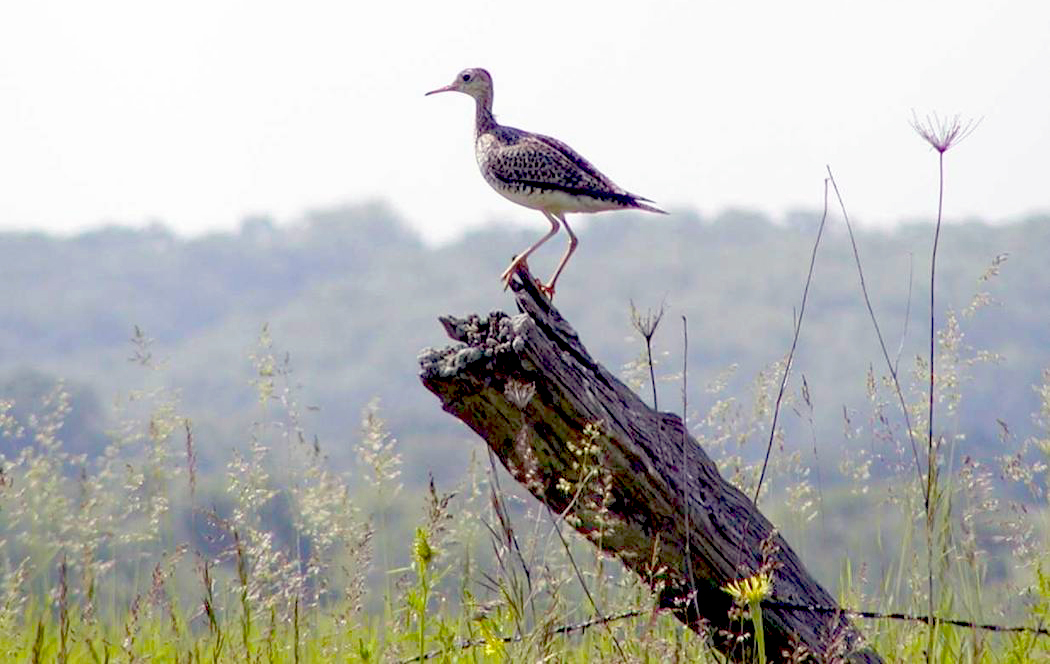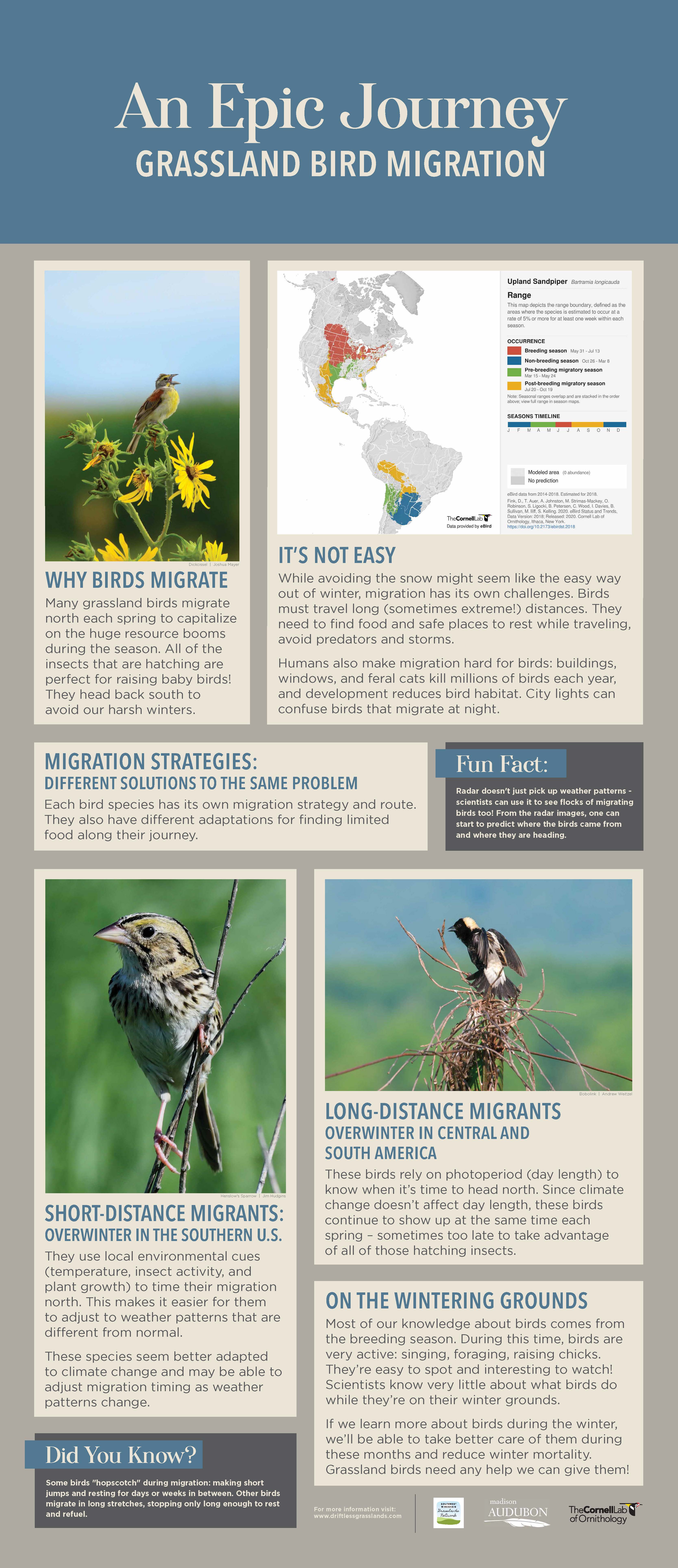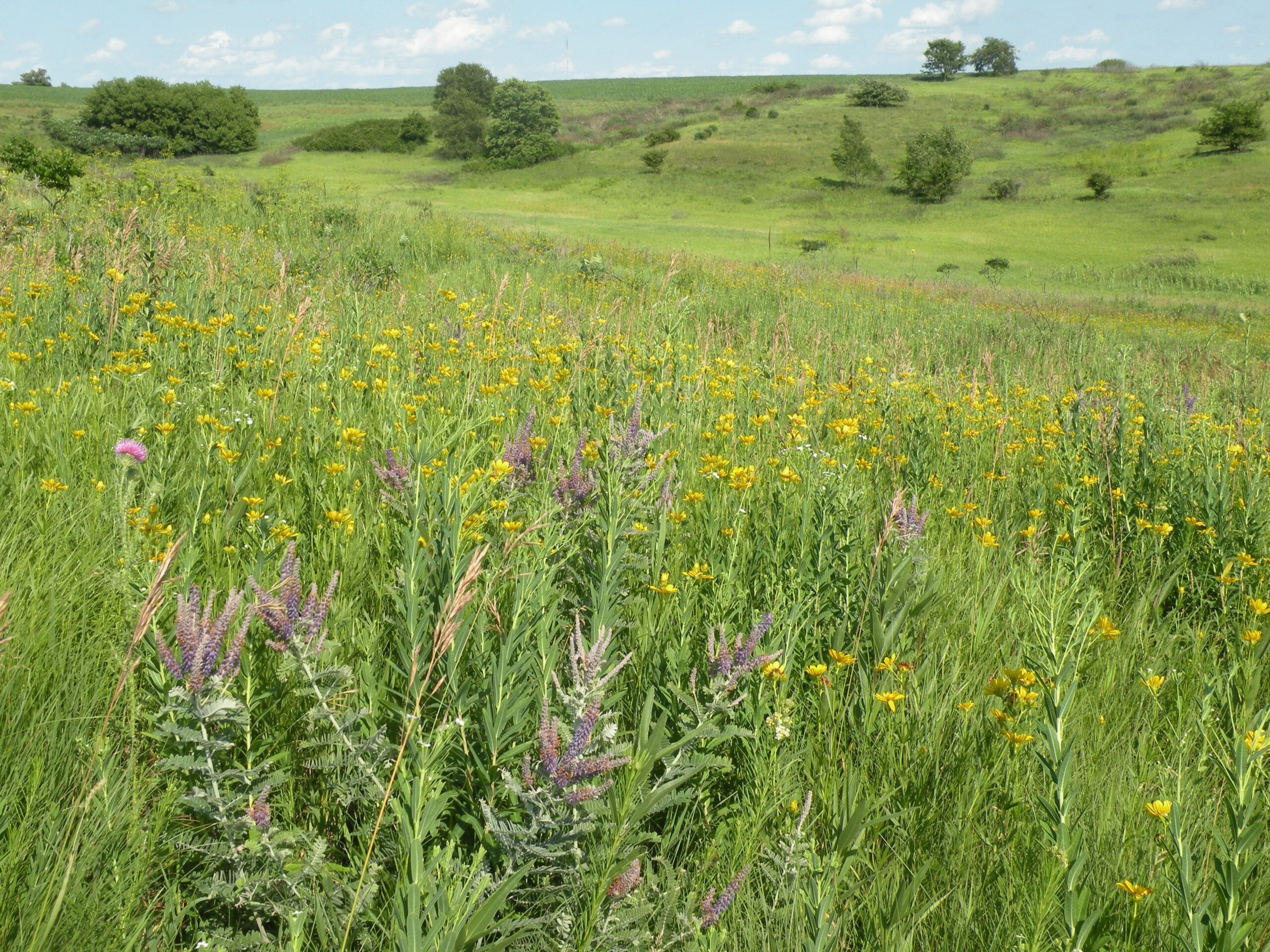Driftless Area Land Conservancy
Why Bird Conservation?
In Wisconsin, many rural landowners are united by a common value: their love of land. This fact inspires Cindy Becker, Southern Driftless Grasslands (SDG) project manager for the Driftless Area Land Conservancy (DALC), to invest in relationships that may not seem complementary at surface level.
Becker came to this realization at the beginning of her tenure at SDG, as she reviewed the responses to a “Landowners Matter” survey distributed to landowners in the region. The survey was designed to help SDG understand the values, motivations, and barriers to grassland conservation in the area, and was funded in part by a 2019 Cornell Land Trust Bird Conservation Initiative (LTBCI) small grant.
According to Becker, SDG learned from the survey that “Birds, bees, and butterflies matter to people. Many people choose to live in rural areas because they appreciate the beauty around them, and they are interested in protecting nature.”
The grant from LTBCI came at an important moment for SDG, just as Becker was beginning as project manager. SDG had been in existence for about 20 years and was reemerging under the organizational support of Driftless Area Land Conservancy (DALC). A partnership that includes public and private agencies, SDG is guided by a steering committee that includes representatives from many of those regional organizations, and Becker is currently SDG’s only staff member.
The results of the survey SDG distributed in 2019 helped build a foundation for the organization’s work and SDG’s mission: to actively support the conservation of grasslands in Southwest Wisconsin to benefit the region’s wildlife, water, farms, and communities.
Spotlight Resources: Collaborative Partnerships, Bird Conservation Areas (BCAs), and Surveys/Focus Groups

SDG’s service area is a stronghold for grassland birds, according to Becker, as the land is primarily used for grazing beef and dairy cattle, creating farmscapes that often double as habitat for species like Bobolink, Eastern Meadowlark, Henslow’s Sparrow, Savannah Sparrow, Dickcissel, Grasshopper Sparrow, and Northern Harrier. Thus, a legacy of collective advocacy for grassland birds exists in this region, which SDG seeks to continue and grow with their partners and the community.
Along with DALC, other partners involved in SDG’s collaborative work include Southern Wisconsin Bird Alliance, Pheasants Forever, The Prairie Enthusiasts, The Nature Conservancy, Iowa County Land Conservation Department, NRCS field offices in southwest WI, University of Wisconsin Madison, Wisconsin Department of Natural Resources, and U.S. Fish and Wildlife Service.
As part of the “Landowners Matter” campaign conducted from 2019 to 2020, SDG worked with University of Wisconsin Extension to develop a landowner survey. The voluntary survey was distributed to 290 landowners in and around the focus area, which centered on two Bird Conservation Areas (BCAs): Barreltown BCA and Perry-Primrose BCA. Both BCAs are characterized by working farm operations, and together they spread over approximately 22,000 acres of rural Wisconsin.
Survey questions addressed farm practices, enrollment in conservation programs, motivation for land management, interest in grassland birds, pollinators, and hunting, and socio-demographics; answers helped shape the messaging and strategies SDG used for public engagement during follow-up exhibits and events.
In addition, three farm tours for women farmers were held in the summer of 2019. These events served as focus groups for SDG, opportunities to discuss the survey questions in an informal setting and a chance to connect farmers with technical service providers such as American Farmland Trust and County Conservation Departments.
Making the Connection

Informed by the focus groups and lessons learned from the survey about landowner values and motivations, SDG engaged the public in an educational campaign focused on grassland birds. According to Becker, one of the challenges of this project was identifying the appropriate level of information to share with the public.
After much consideration, Becker and the other project partners settled on using beautiful imagery and basic messaging, with broad appeal, to develop exhibits about grassland birds and grassland habitat. The exhibits cover six main topics: Migration, Habitat is Home, Our Grassland Birds, Protecting our Grasslands, Summer in Wisconsin, and How to Help.
Although COVID interfered with in-person library exhibits and family events scheduled for 2020, the support network of the local library system made it possible for SDG to hold virtual events that featured the grassland bird exhibits instead. Designed to be evergreen and visually appealing, the six banners developed as part of this project are still in demand for use at conferences, they are displayed around Earth Day and spring migration at local libraries, and organizations beyond SDG’s immediate circle often ask to borrow them for their exhibits.
Advice to Other Land Trusts
When working on a project like this, it’s important to think out of the box and bring new stakeholders to the table, notes Becker. Often, these unlikely relationships and voices are those that help you learn and grow the most, as it’s easy to get siloed in your own work, says Becker. For her, one of the most encouraging results of this project was the realization of many new and potential partnerships within the farming community.
Sometimes, working with groups and individuals outside of your usual sphere of influence opens the door to new opportunities, innovative strategies for communicating, and even unexpected funding sources. For example, as a follow-up to the “Landowner Matters” campaign, SDG received a grant from the Food, Faith, and Farming Network to produce several three- to five-minute videos for YouTube. This collaboration was a recommendation of Farm Service Agency office staff, who heard local farmers talking about watching YouTube videos for entertainment and education.
Next Steps

A grant from the Bobolink Foundation is going to enable SDG to expand its capacity and land protection efforts in 2024. This upcoming year, SDG is planning to focus on grazing-related outreach. Over the next two years, the collaboration will sponsor 10 to 15 before and after surveys on farmland where habitat management practices are being implemented.
SDG will work with local birders to conduct these surveys, harnessing the power of partnership to increase organizational impact and capacity. And Becker will focus on one-on-one landowner meetings, always advocating for grassland birds in her work, always trying to “move landowners up the ladder of engagement” by connecting them with resources, teaching them how to use Merlin and eBird, getting them interested in land management activities—and hopefully, during the process, removing some of the barriers to grassland conservation in the Southern Driftless Grasslands area.


